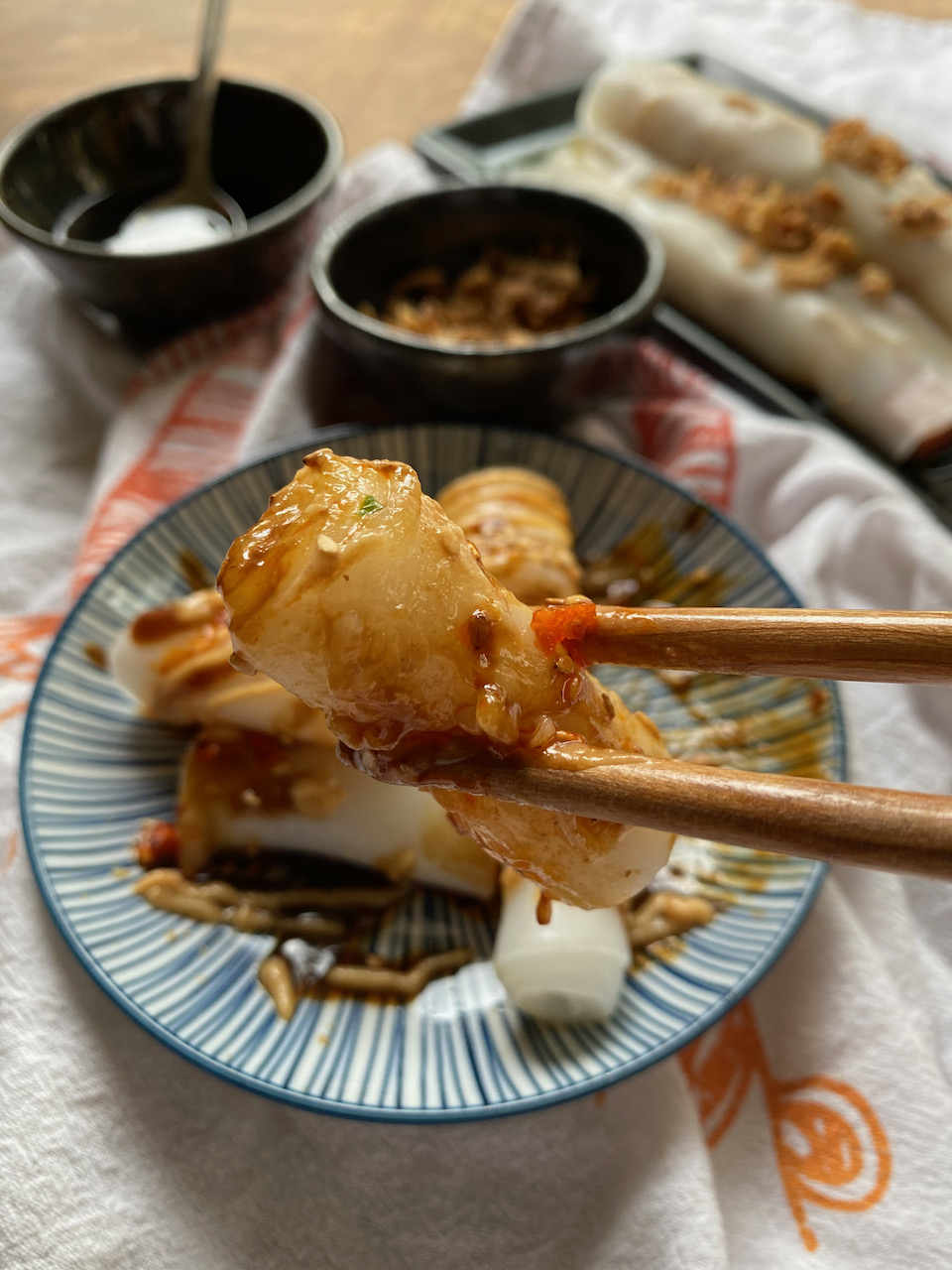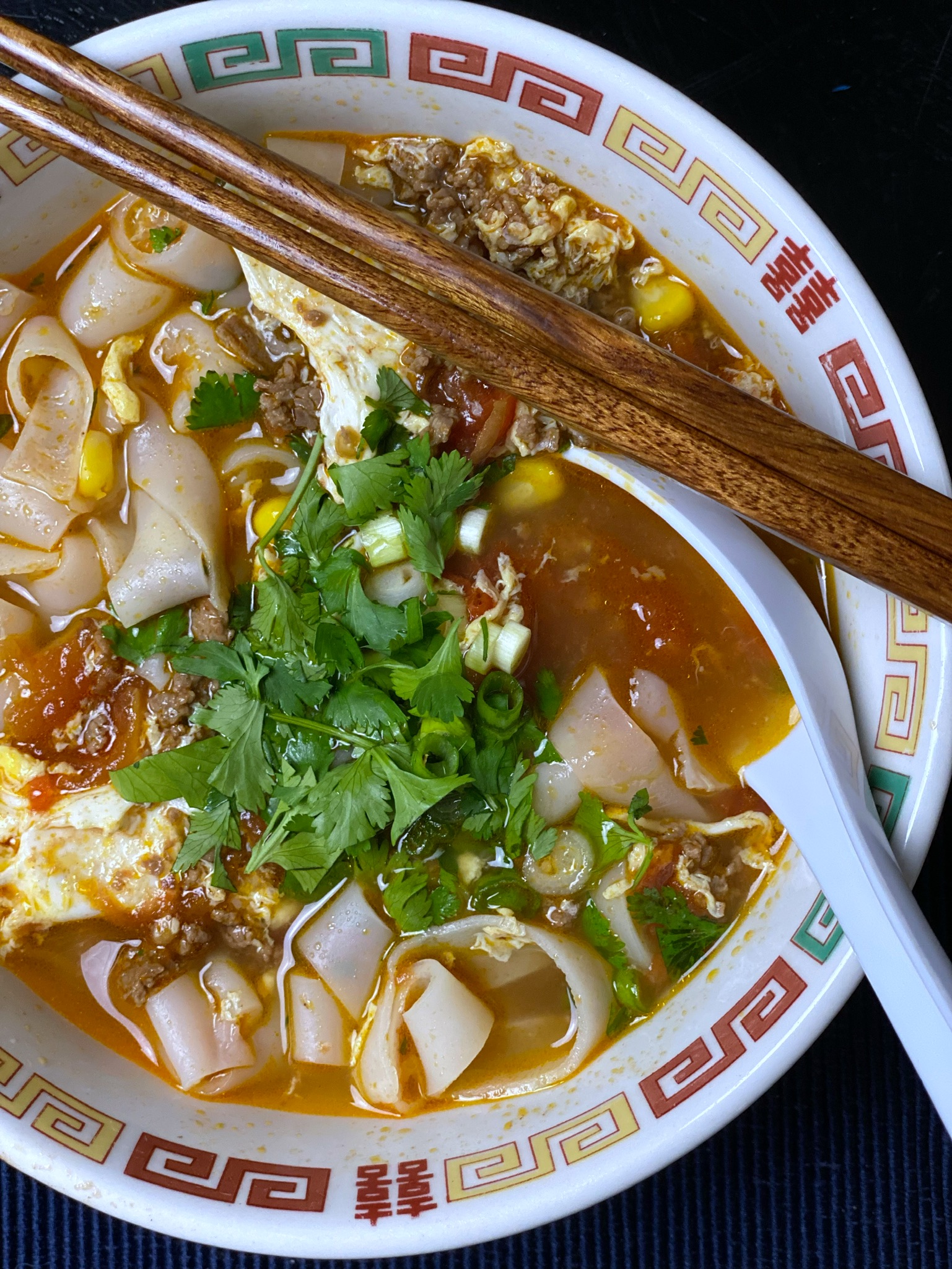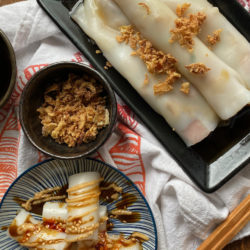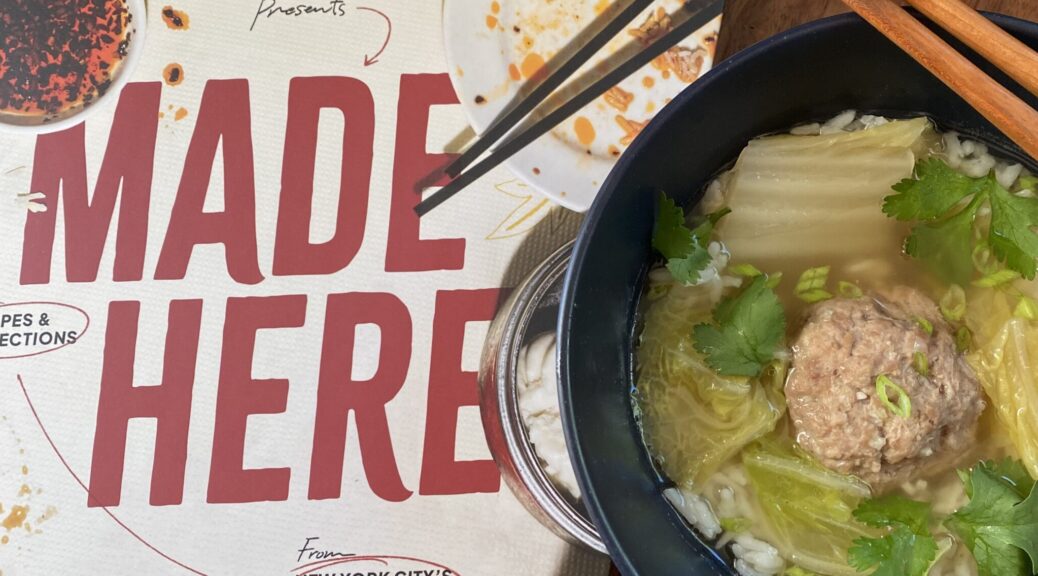
Lions Head Meatballs (Made Here… in Chinatown NY)
A slew of small mom-and-pop stores and restaurants in NYC Chinatown were hit especially hard during the pandemic. In response, Send Chinatown Love, a volunteer community organization, was created to help these struggling businesses. Donations to Send Chinatown Love were used to buy meals from local restaurants and then distributed to the elderly and vulnerable community members. Win-win. Their volunteers also taught businesses how to modernize and broaden their reach. Even as the pandemic has receded, Send Chinatown Love has continued to help and grow and has expanded to other Asian communities in New York.

A friendly greeting and words of affirmation in the recipient’s native language on a decorated postcard accompany every delivered meal. This is the care and compassion of the organizers and volunteers of Send Chinatown Love. Who wouldn’t want to be a part of this? So while we were in New York, I made postcards and delivered them to a cute little bakery, Partybus Bakeshop with yummy breads & treats in Chinatown. I hope my postcards helped brighten someone’s day.

Labor of Love
Send Chinatown Love’s latest foray is a self-published, GORGEOUS cookbook, titled Made Here. Proceeds from the book go back to the community fund. This wonderful compendium is filled with recipes, stories, and photos of local businesses. The chapter on Taiwan Bear House in Chinatown included their Lion’s Head Meatballs (狮子头) recipe. A homey dish made from ground pork and poached in a flavorful, light broth with cabbage (lion’s mane). It is a quintessential Taiwanese dish.
Flashback to 17
Well…the last time I had Lion’s Head Meatballs I was 17 years old and sitting at a table in an army barrack in Taiwan. Across from me, a grinning Taiwanese soldier urged me to EAT. Yo, it was sus, but I tried it and it was delicious. That was the summer between my freshman and sophomore year at Berkeley. I was in a student exchange program in Taiwan. My mom and dad sent me alongside other Chinese American kids sent by their parents, to discover their Chinese roots. We learned a bit of Mandarin and Taiwanese culture, and a lot about having a good time. We vastly outnumbered the teachers and chaperones so it was easy to sneak out to roam the streets and night markets in Taipei.
I was one of the youngest on the trip. This meant, bars and nightclubs were off-limits (I am not messing around in a foreign country, nope). But shopping, wandering the streets, and absorbing everyday life in Taipei was fair game. My fondest memories were of the food, especially at the night markets. I stuffed myself silly with Guo Tieh (Potstickers), Xiao Loong Bao (Shanghai Dumplings), and omelets filled with briny oysters. We gawked at the old men tossing live shrimp into a bowl, splashing them with whiskey which caused them to jump on the plate. The plate they handed you to enjoy. Was I brave enough to try them? I’ve blocked that memory.
This was my first exposure to street food and markets and to this day whenever we travel we are sure to hit the local street markets. ❤️
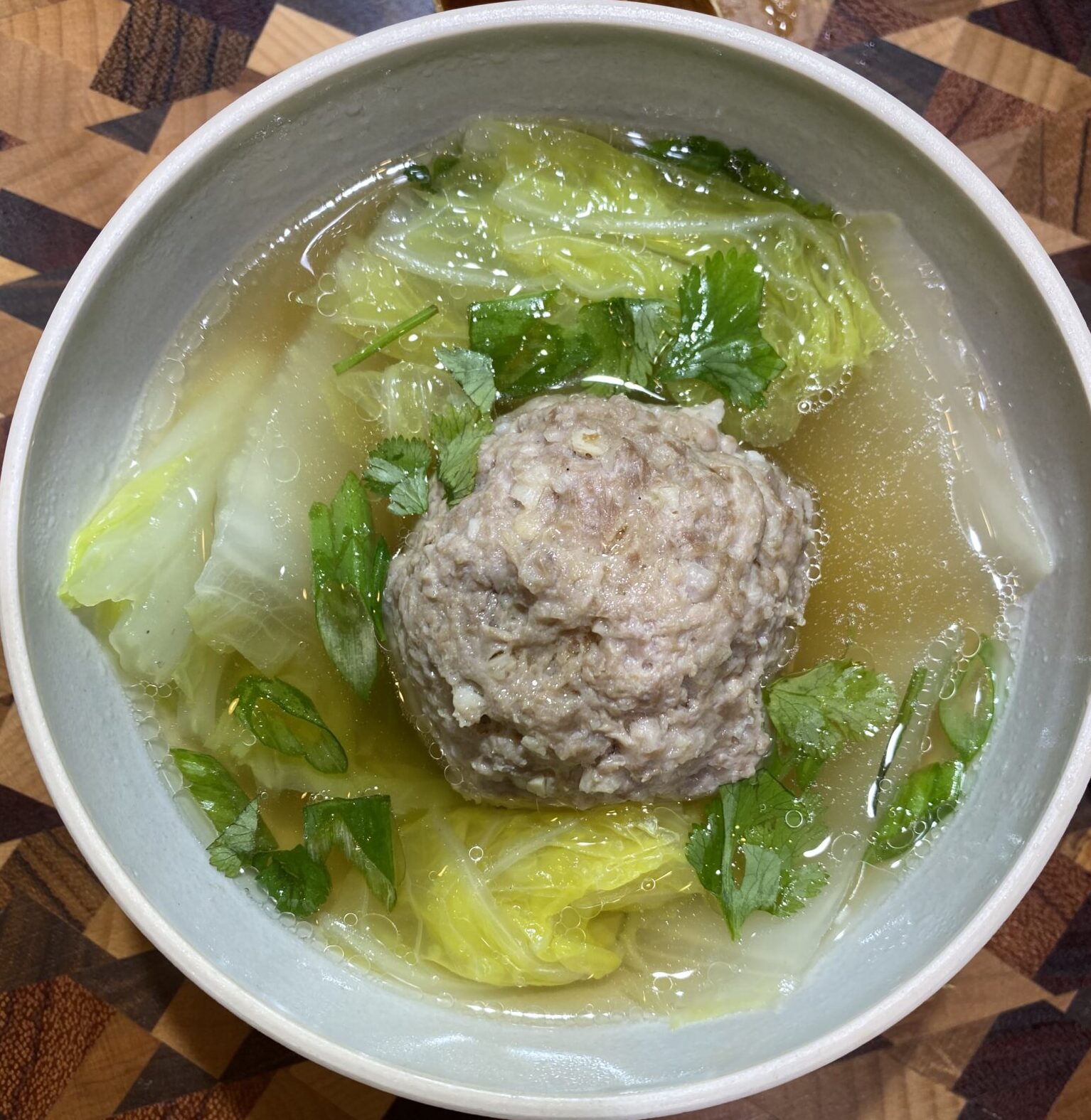
The meatballs resemble the lion’s head and the cabbage its mane. Use your imagination. Use pork with a bit of fat, I recommend 80%-20% pork to fat.
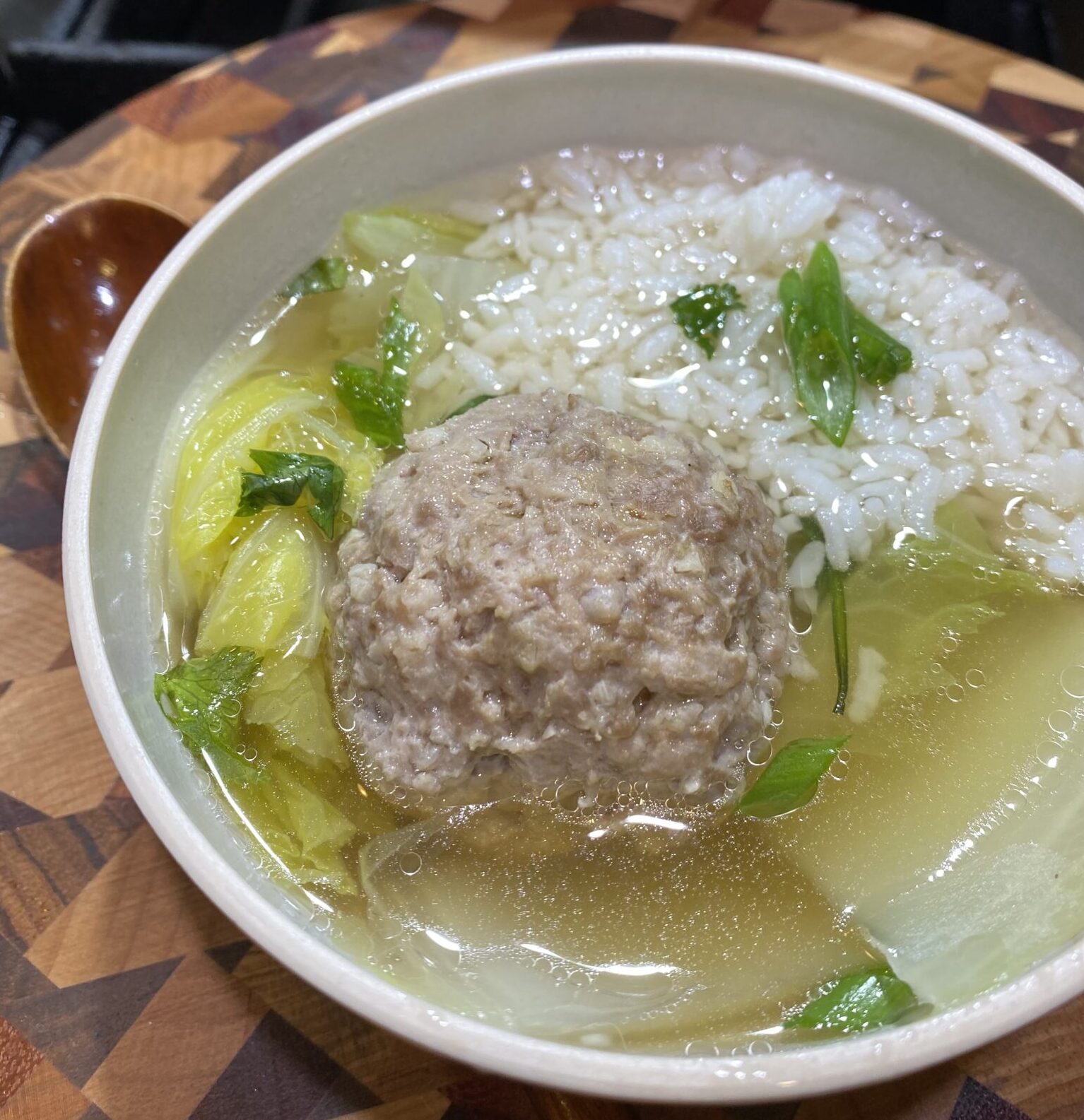
This recipe is very simple so embellishing is easy and welcome. I like adding chopped water chestnuts for crunch and diced scallions for color and flavor. The trick to tender meatballs is to stir the mixture vigorously, in one direction until the meat feels sticky. Preferably, use a pair of chopsticks to stir. The logic? Don’t know, my mom told me to do this and it works.
Lion's Head Meatballs (狮子头)
Ingredients
Meatballs:
- 1 lb. ground pork 80-20 percent pork-fat
- 1 Tbsp + 1 tsp Shaoxing wine or sherry
- 1 Tbsp. soy sauce good quality, preferably a Taiwanese soy sauce, light if not, use Kikkoman Organic + 1 tsp sugar)
- 1/2 inch piece fresh ginger peeled and finely grated or minced
- 3 cloves garlic minced
- 1 tsp. kosher salt or 1/2 tsp sea salt
- ½ tsp. ground white pepper
- 1 scallions trimmed and finely chopped, optional
- 4 ounces water chesnuts chopped, optional
FOR THE BROTH:
- 1 small head Napa Cabbage or regular cabbage end cut off and roughly chopped (you could use a small head of regular cabbage, cored and chopped)
- 2 tsp salt
- 1 1- in. piece of ginger sliced into planks
- 3 sheets of kombu dried kelp each sheet should be approximately 3x3 inches/piece
- 1 dried shiitake mushroom
- 1 tsp salt
Garnish:
- 2 stalks scallions
- 1 bunch cilantro
- Steamed jasmine rice for serving
Instructions
Broth:
- Wipe kelp with a dry cloth or paper towel to remove white powder (salt residual). Set aside.
- Fill a large pot with 10 cups of water. Add ginger, shiitake mushroom, kelp, and 1 tsp salt. set over medium-high heat. As soon as it begins to boil, turn down heat so stock is just simmering. Simmer for 30-45 minutes, do not let it boil as the kelp will get bitter. Once done simmering, strain stock to remove kelp, ginger, and mushroom. Return stock to pot and keep warm while making meatballs.
Meatballs:
- In a large bowl, combine ground pork, seasonings, garlic, ginger, and scallions plus water chestnuts if using. Mix thoroughly.
- Using a pair of chopsticks or a long spoon, stir mixture vigorously in one direction only, until the mixture looks sticky or tacky. Scoop up the meat and slap it back into the bowl a couple times. This process helps to tenderize the meat.
- Form the meat into 4-6 balls, roughly the size of tennis balls. (ok, I like them a bit smaller so make 6-8). Traditionally they are HUGE.
- Gently drop meatballs into simmering stock and cook for about 15-20 minutes until the meatballs float and are tender.
To Serve:
- Just before poaching the meatballs, bring stock to boil and drop in napa cabbage. Boil cabbage for 2 -3 minutes or until just tender. Remove from broth and set aside.
- Before serving taste broth for seasoning. If needed, add a bit of finishing soy sauce or soup soy to add saltiness and depth of flavor.
- Place cabbage in bowl followed by a meatball. Fill bowl with additional broth. Garnish with scallions and cilantro. If you are like my kids you will put a scoop of rice in your bowl then ladle in the soup.
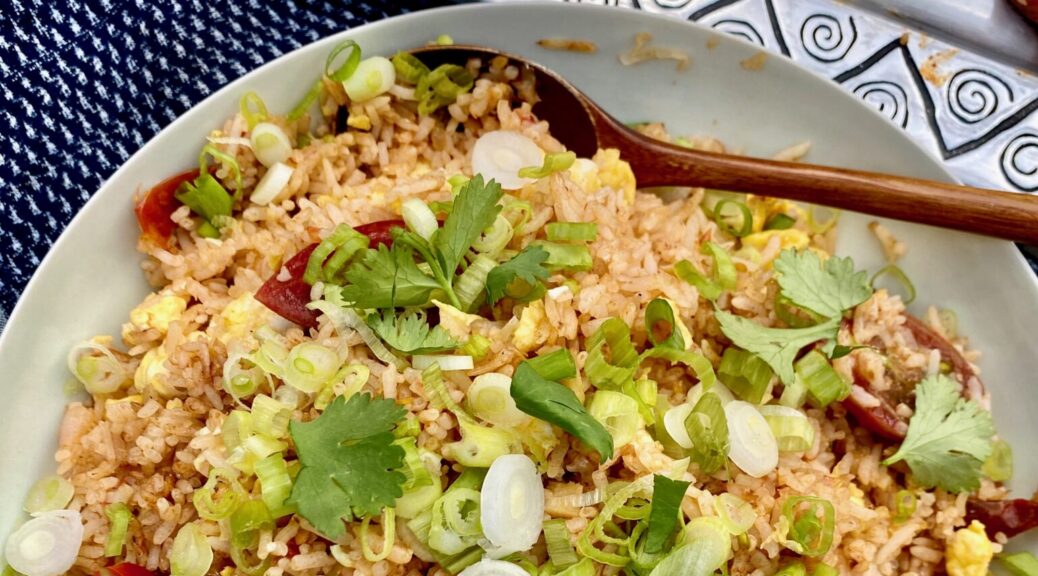

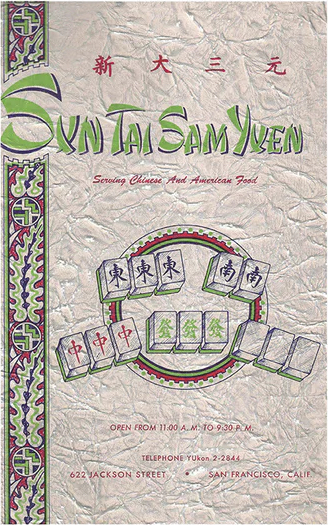
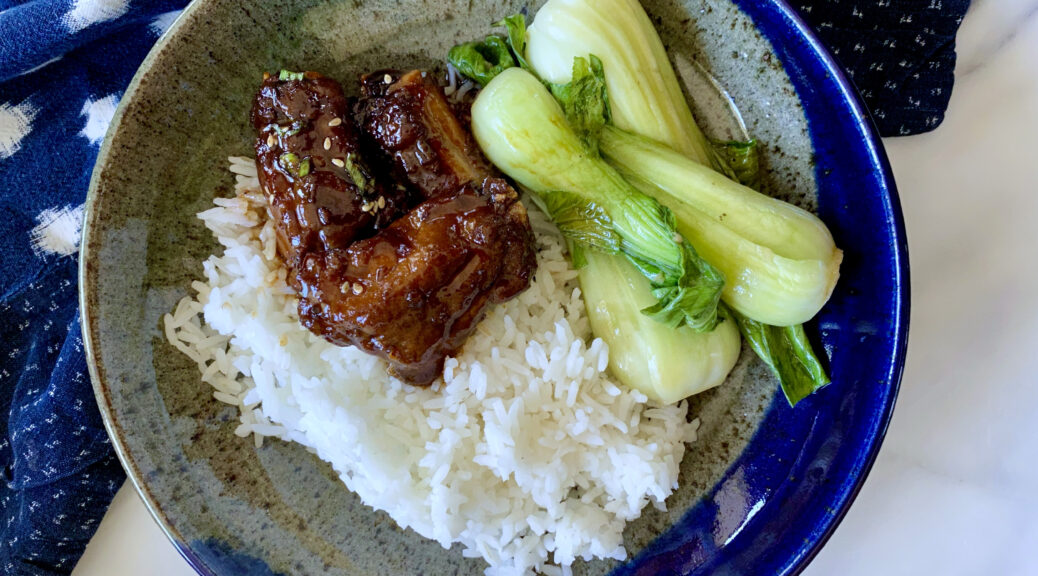
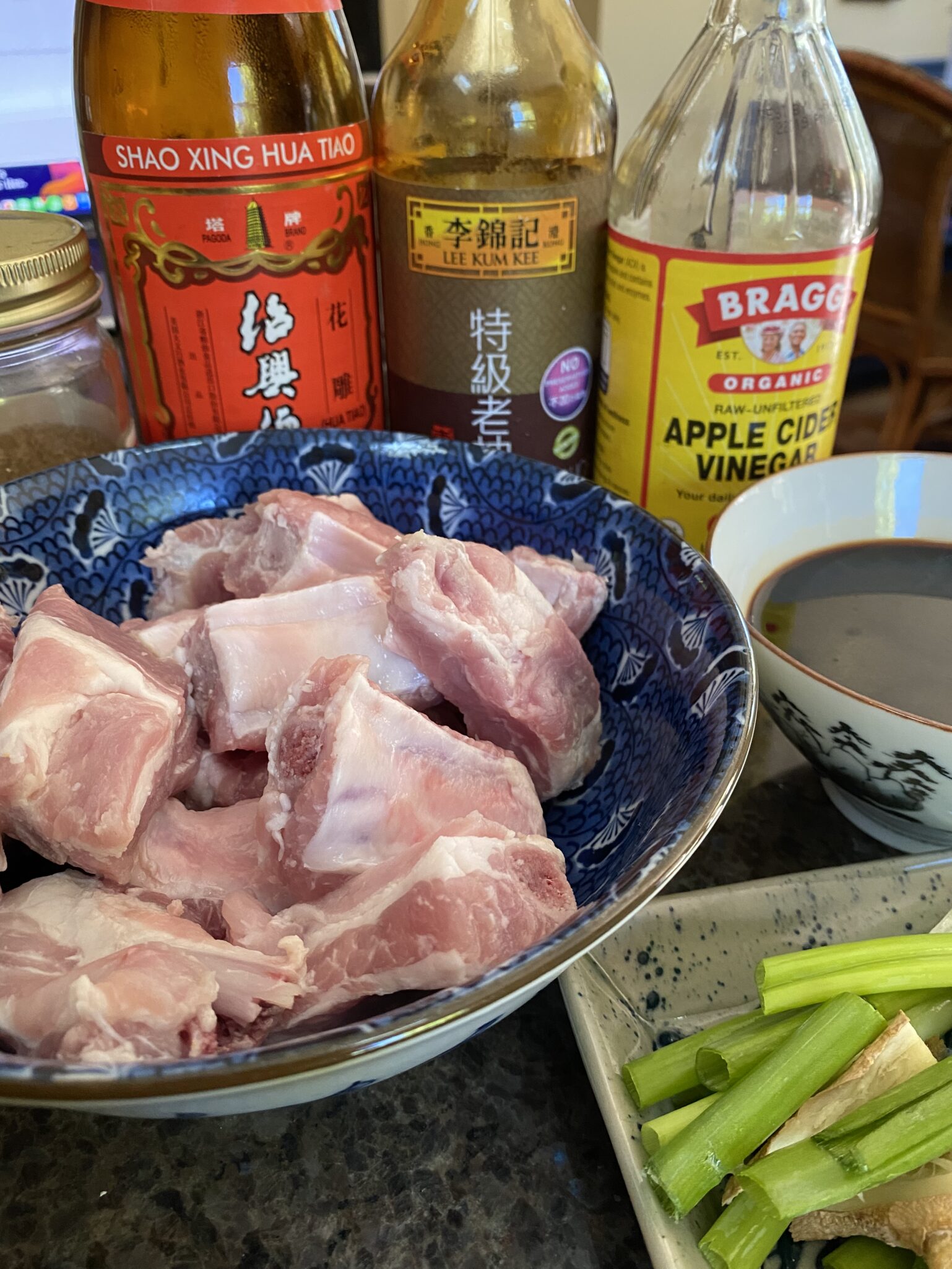

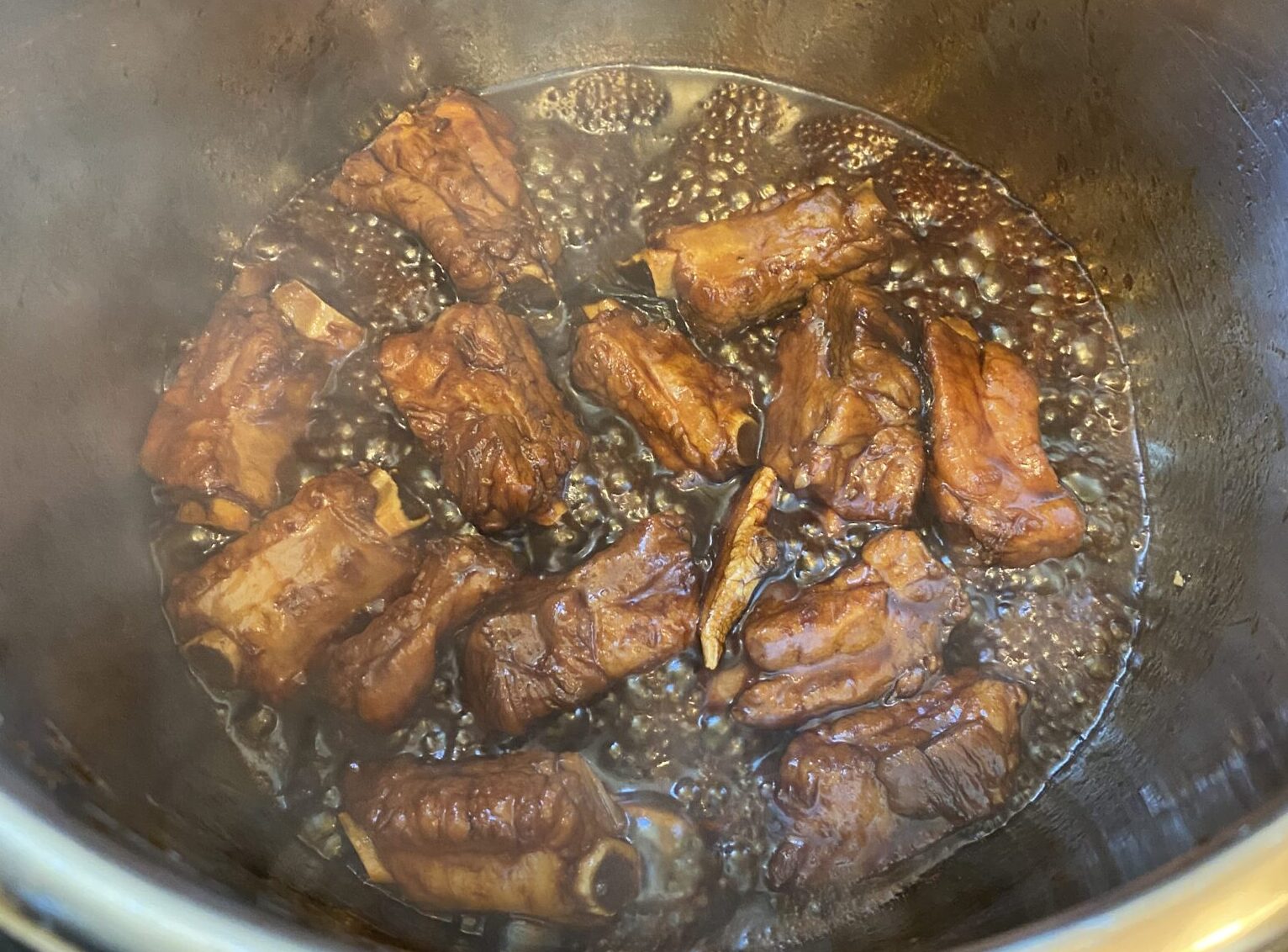

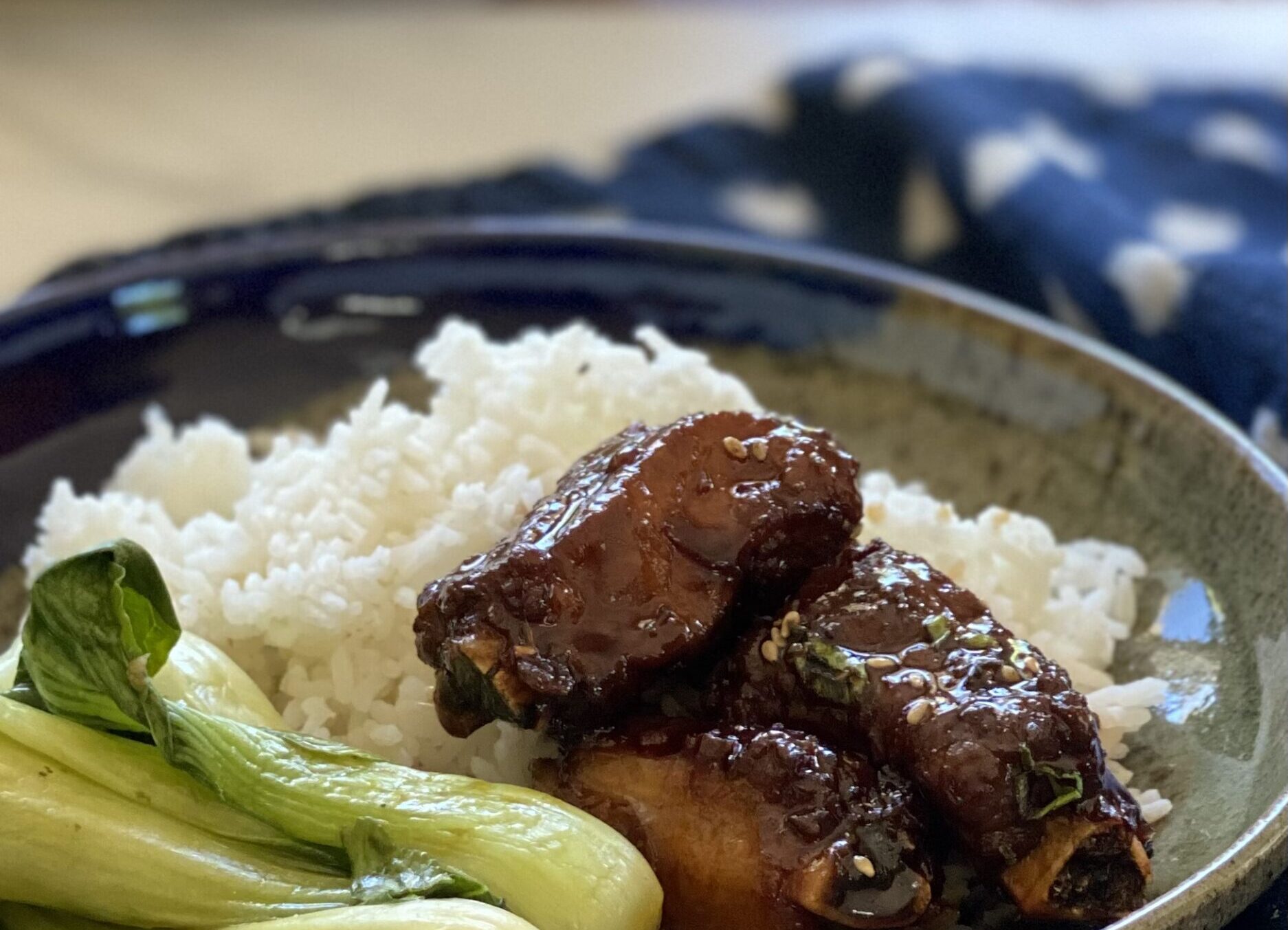
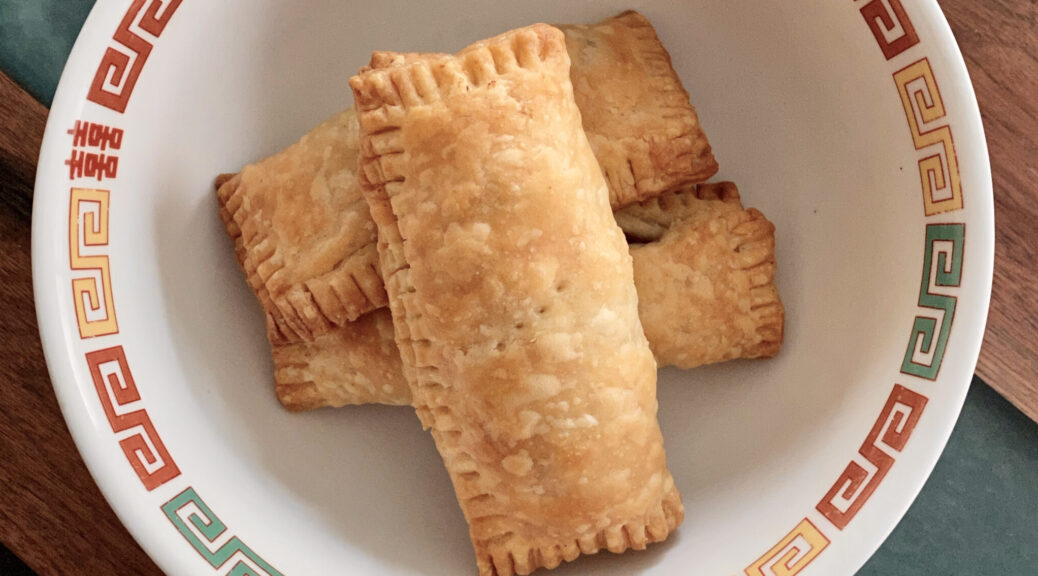
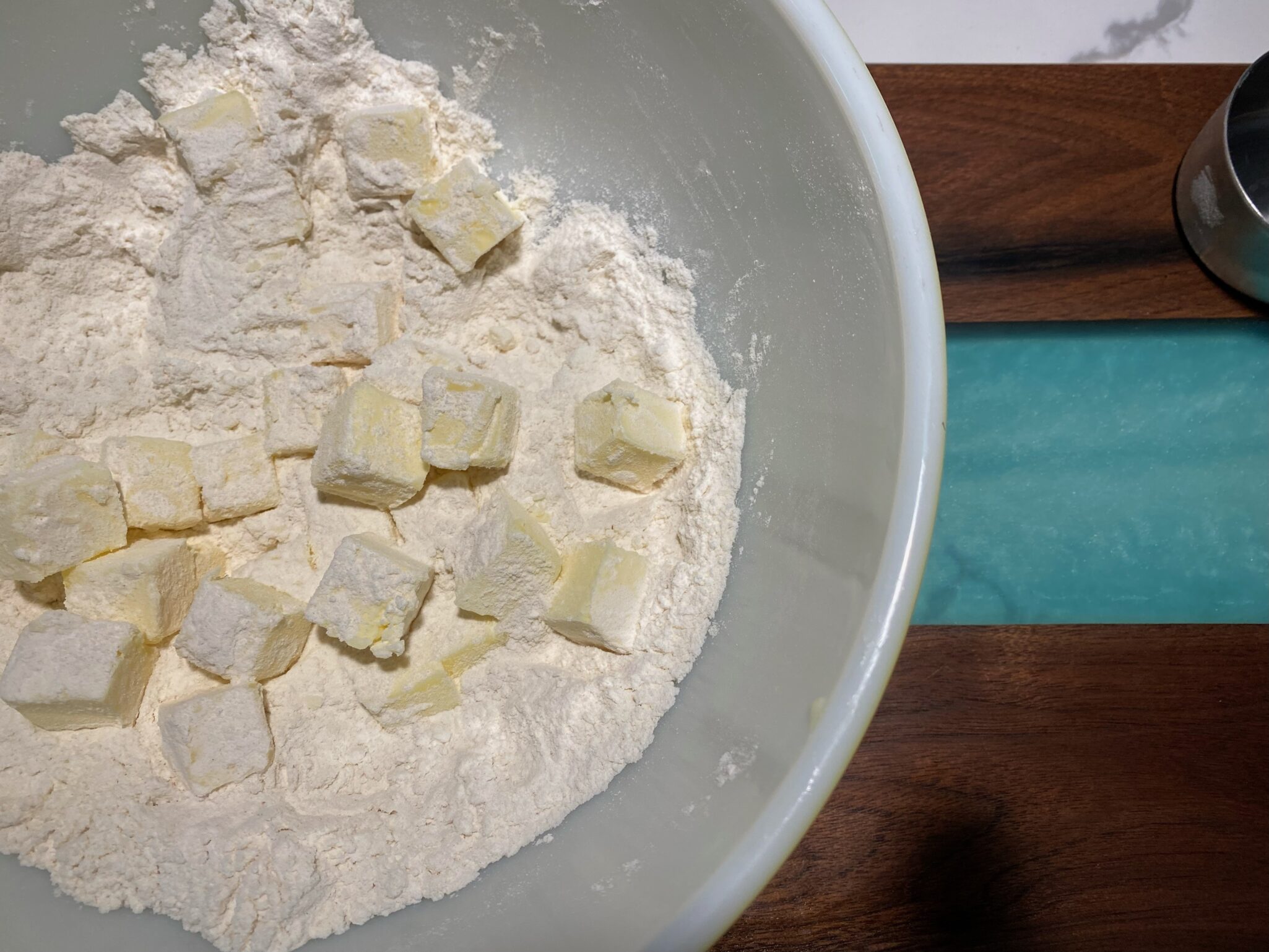
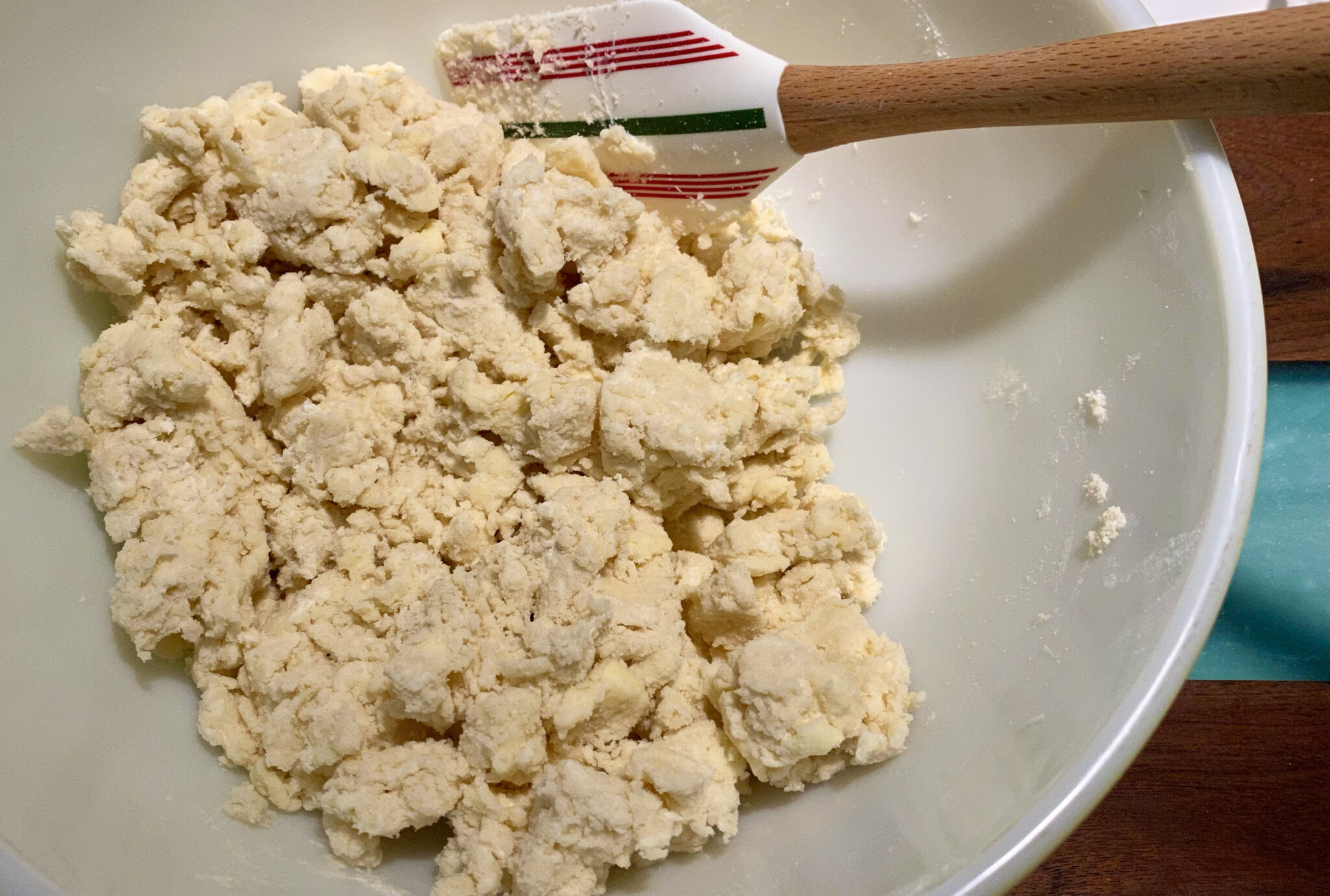
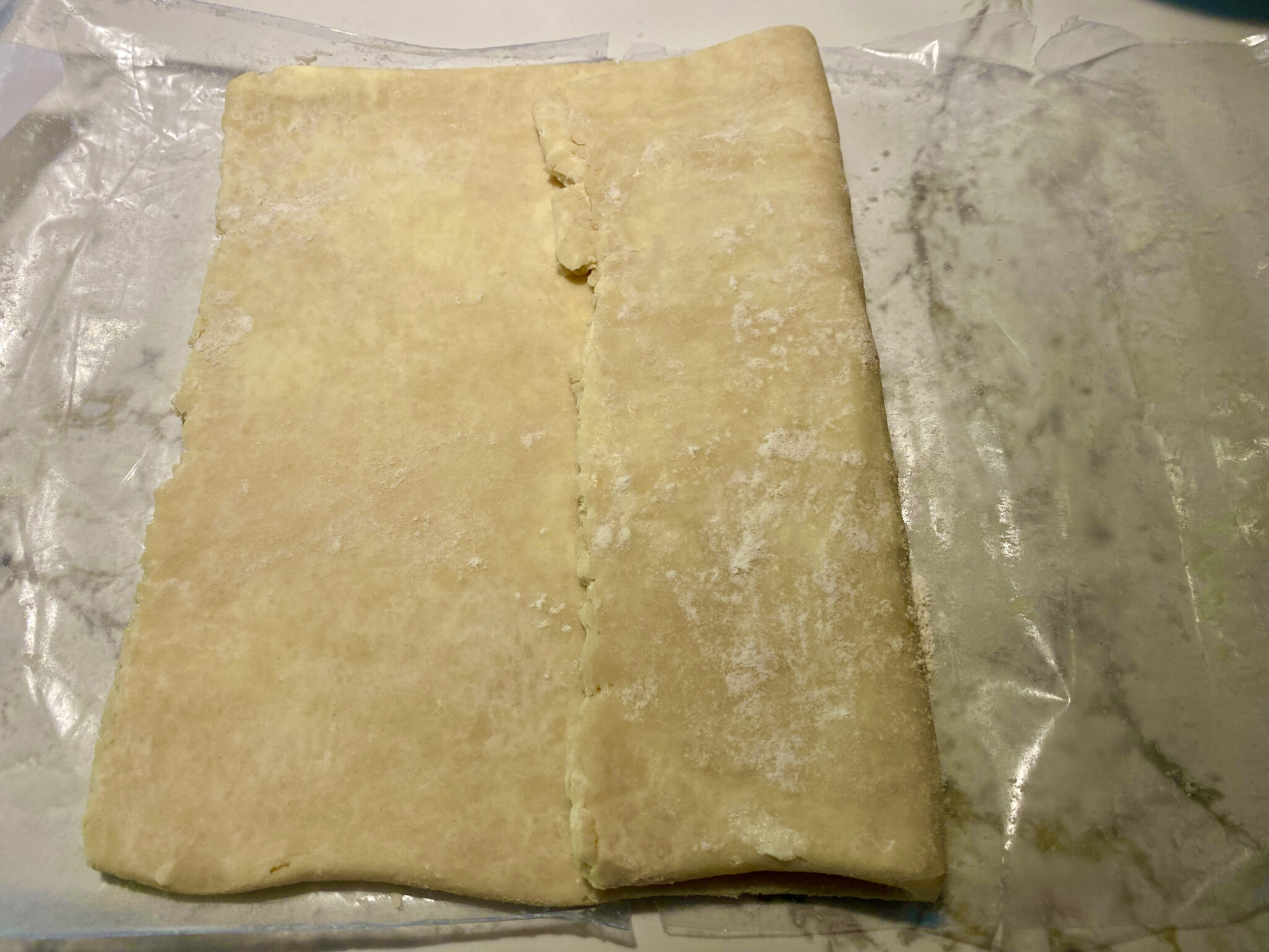
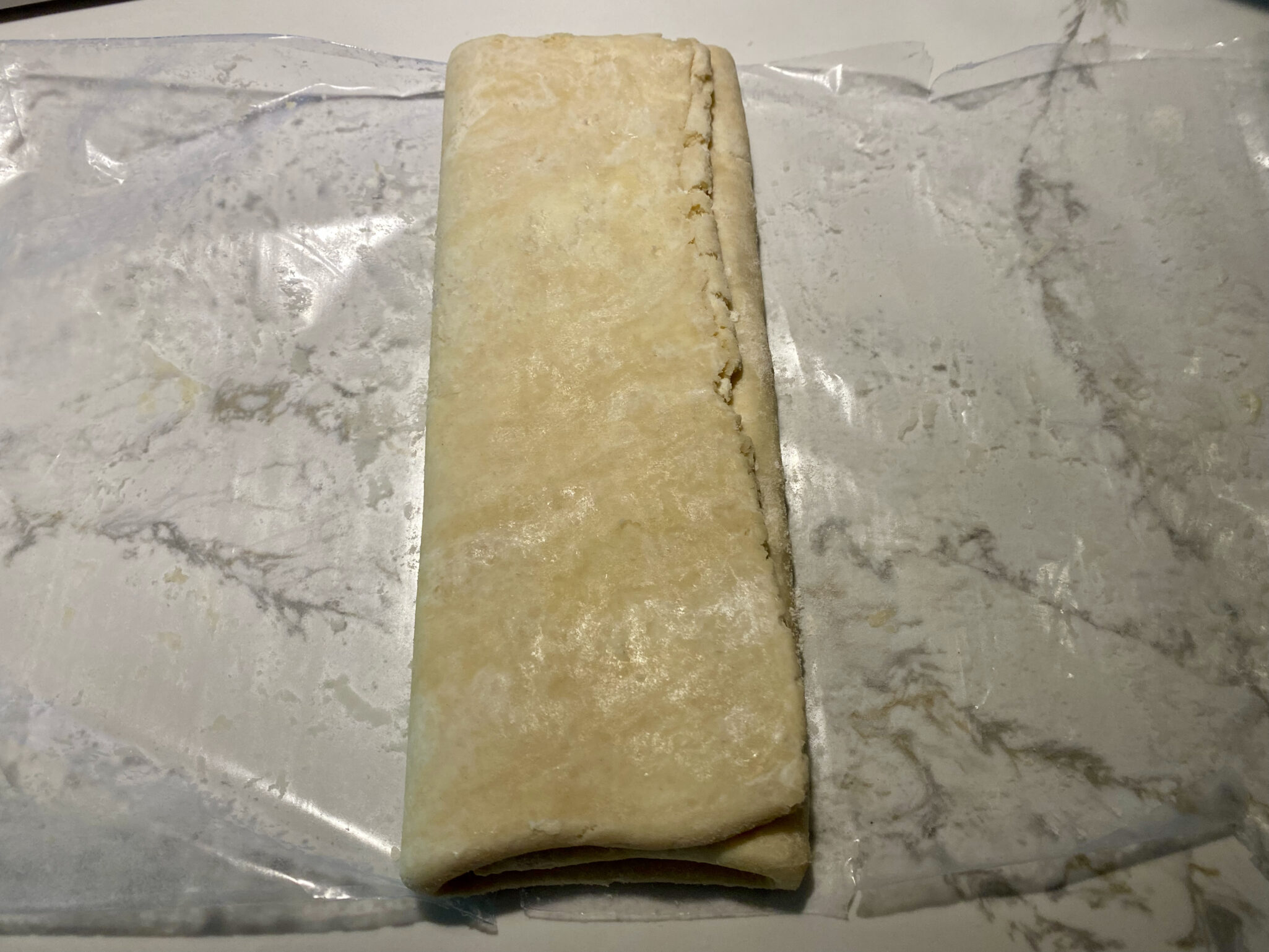
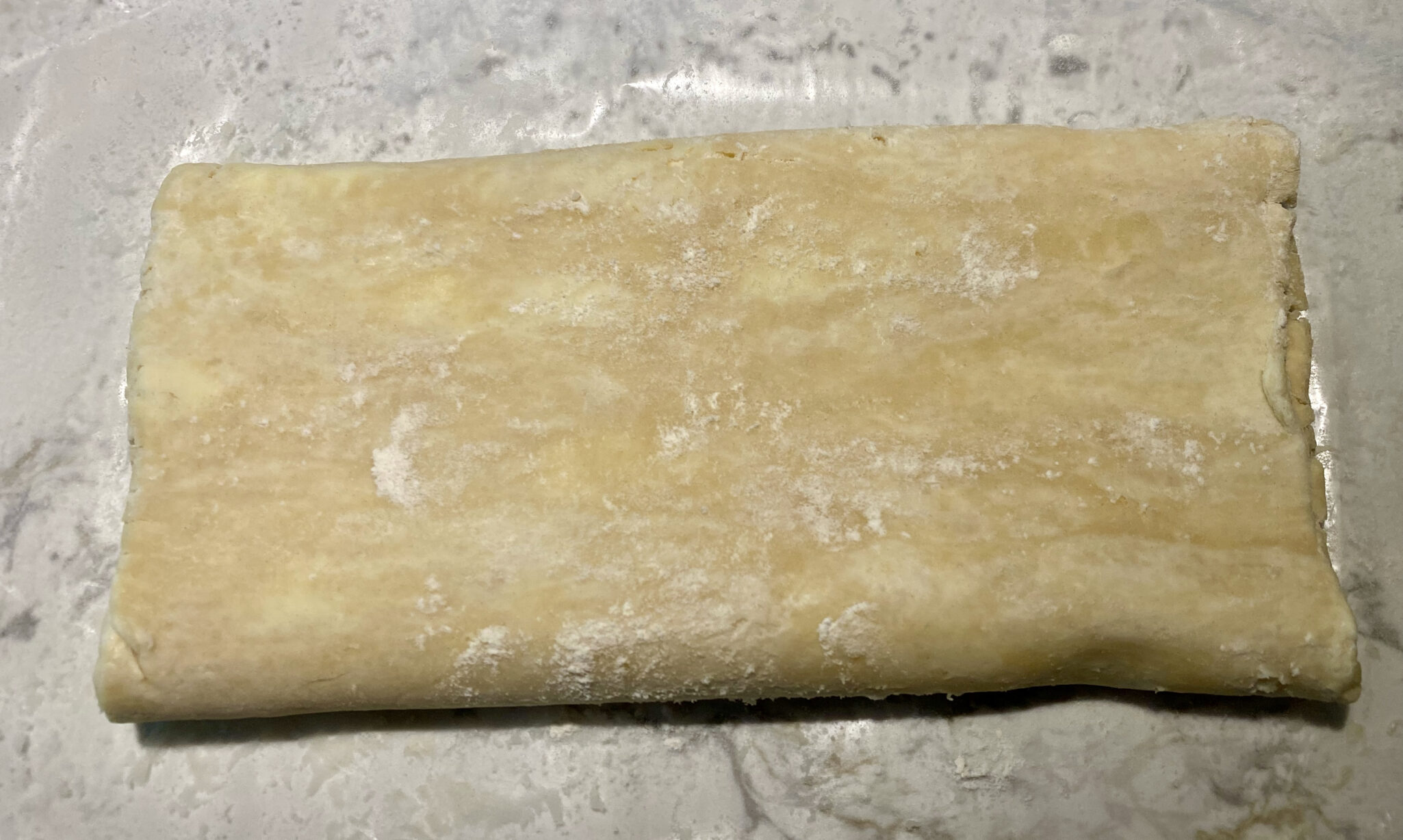
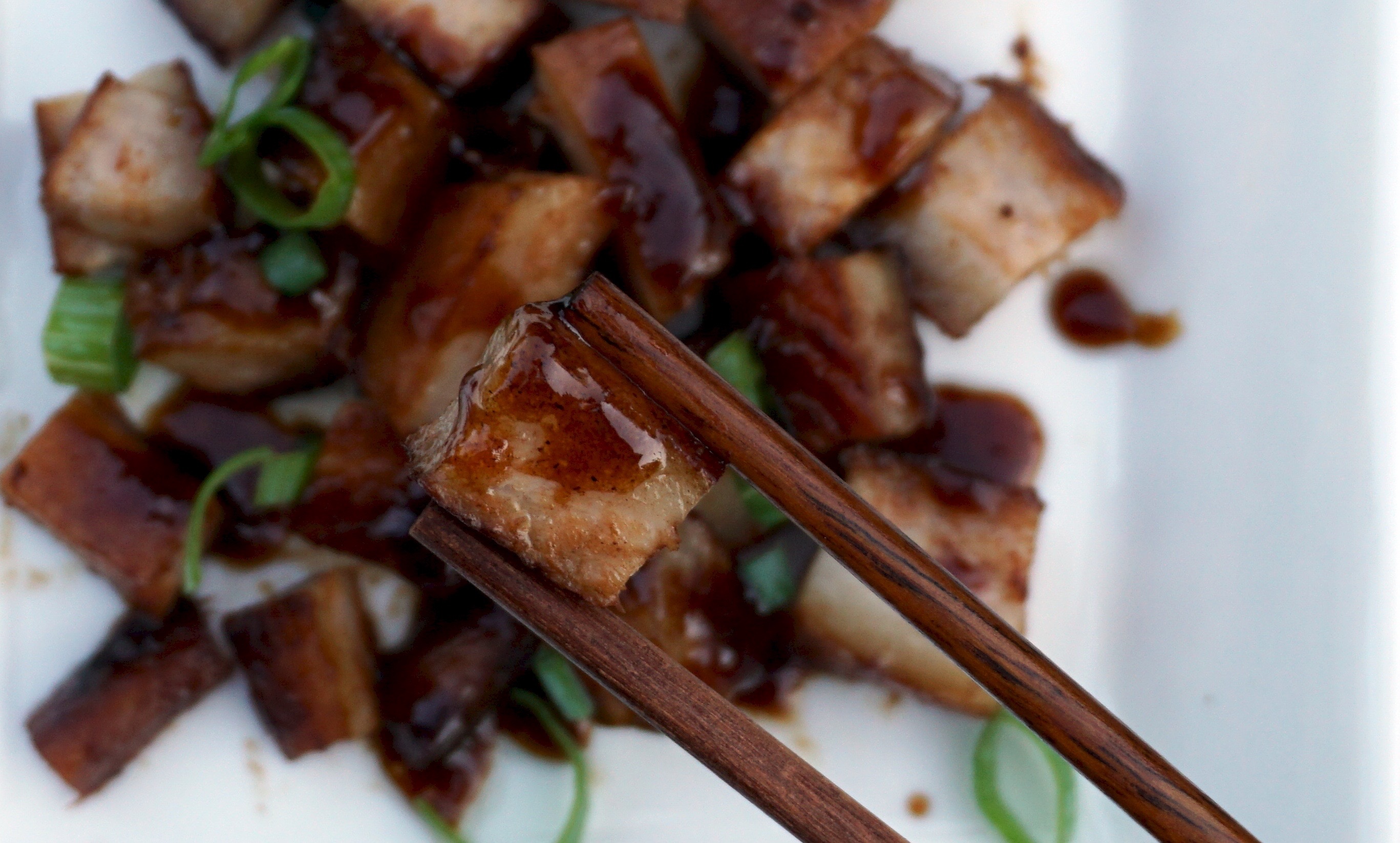
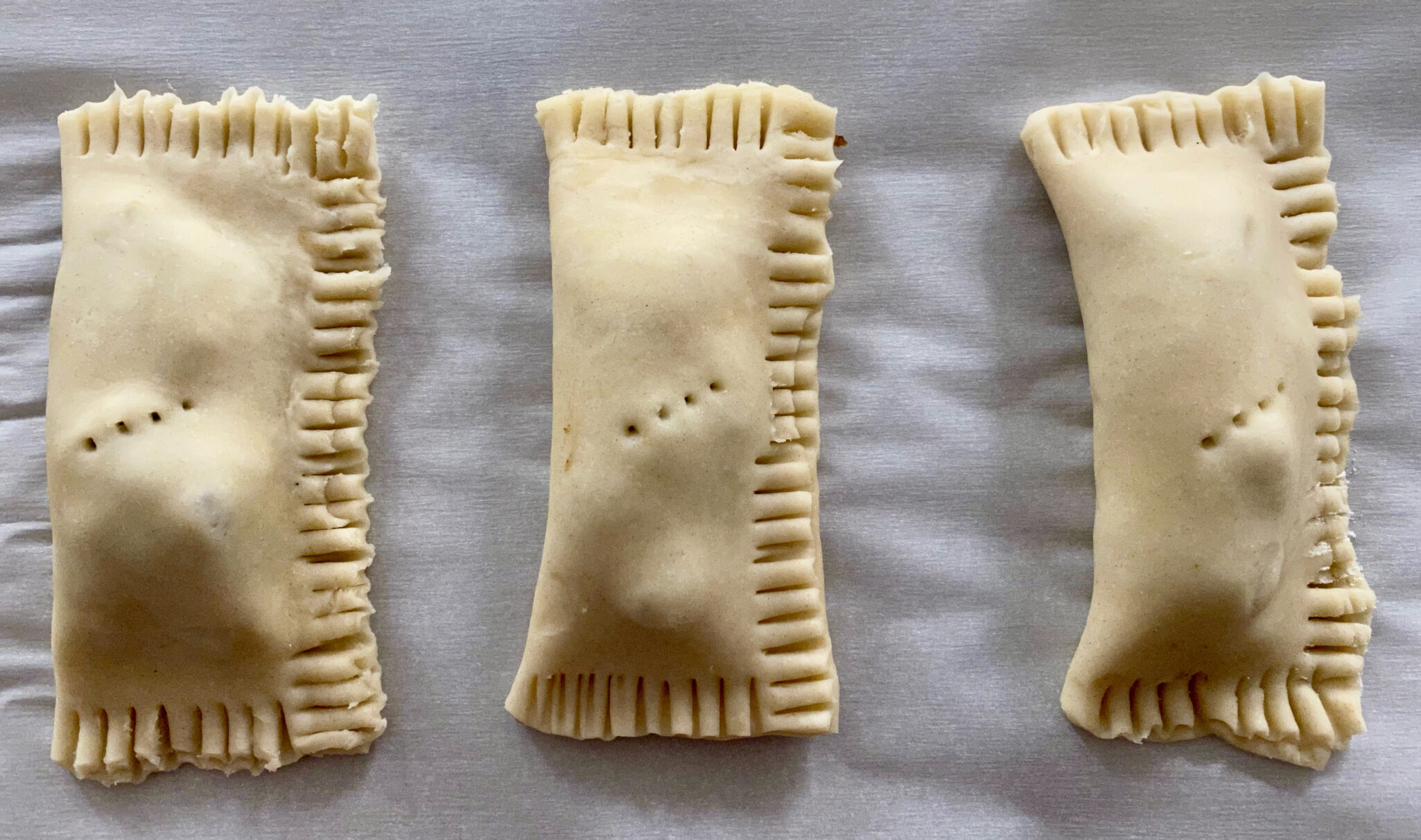

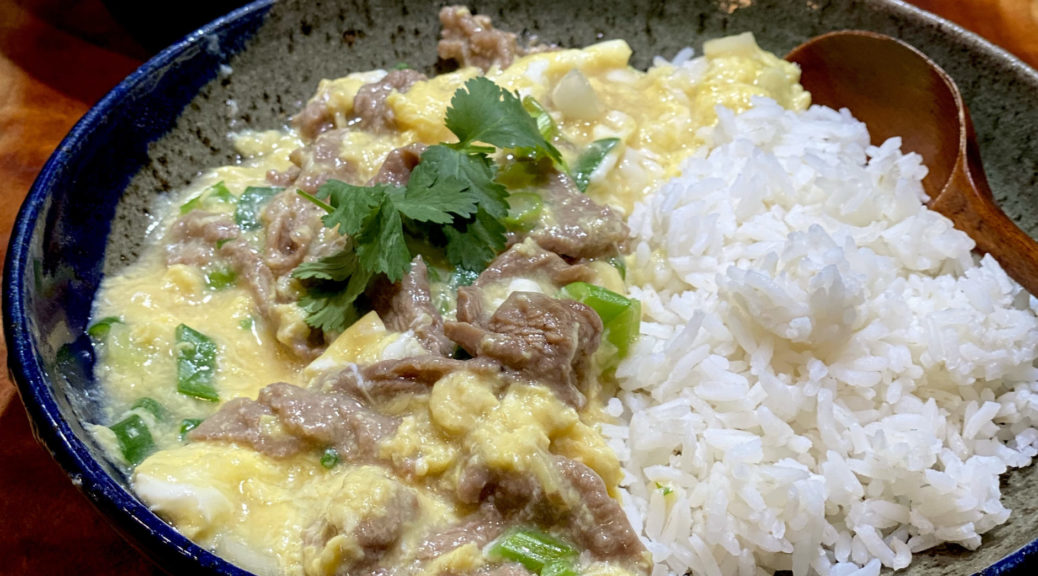

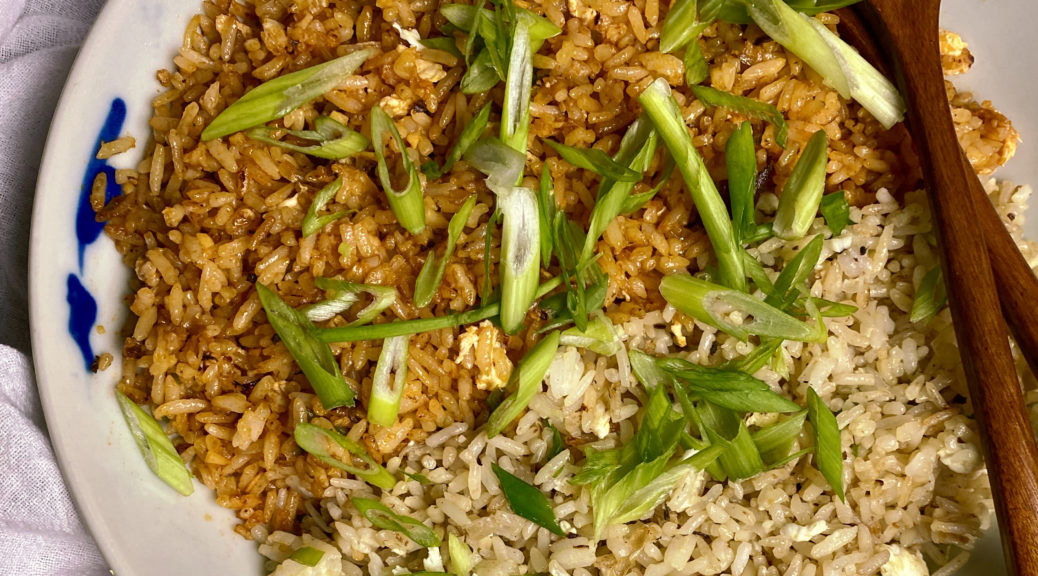


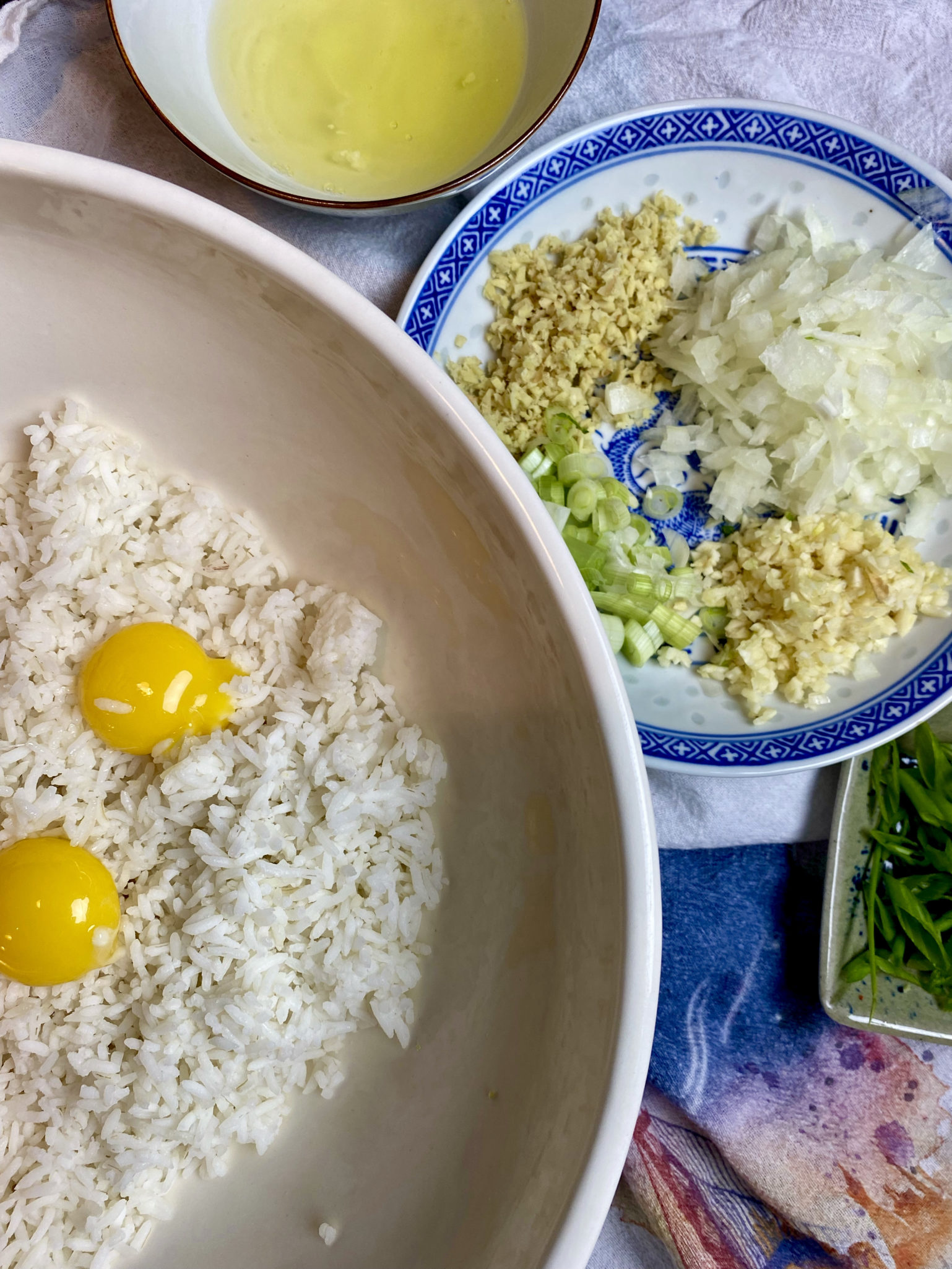




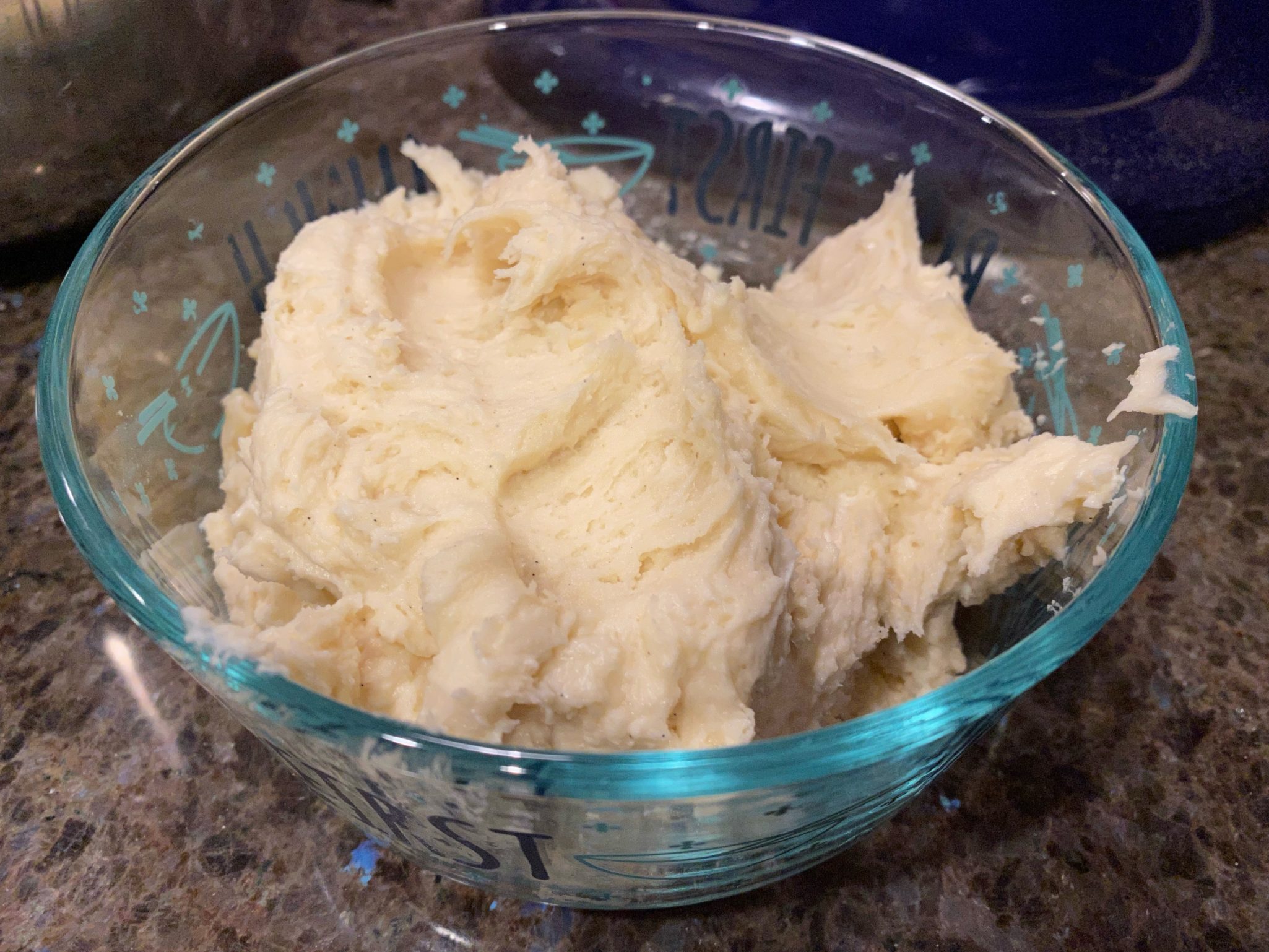



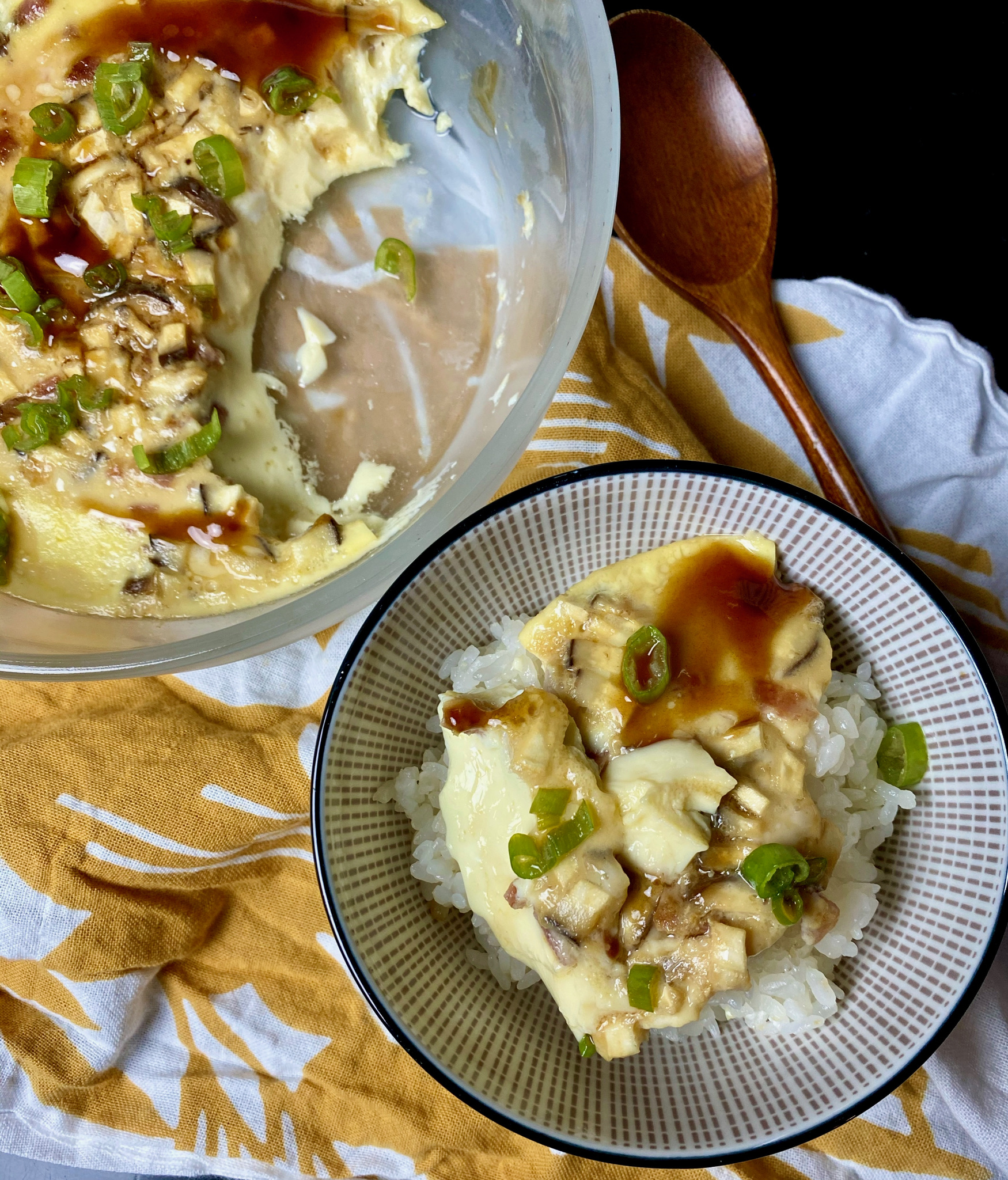

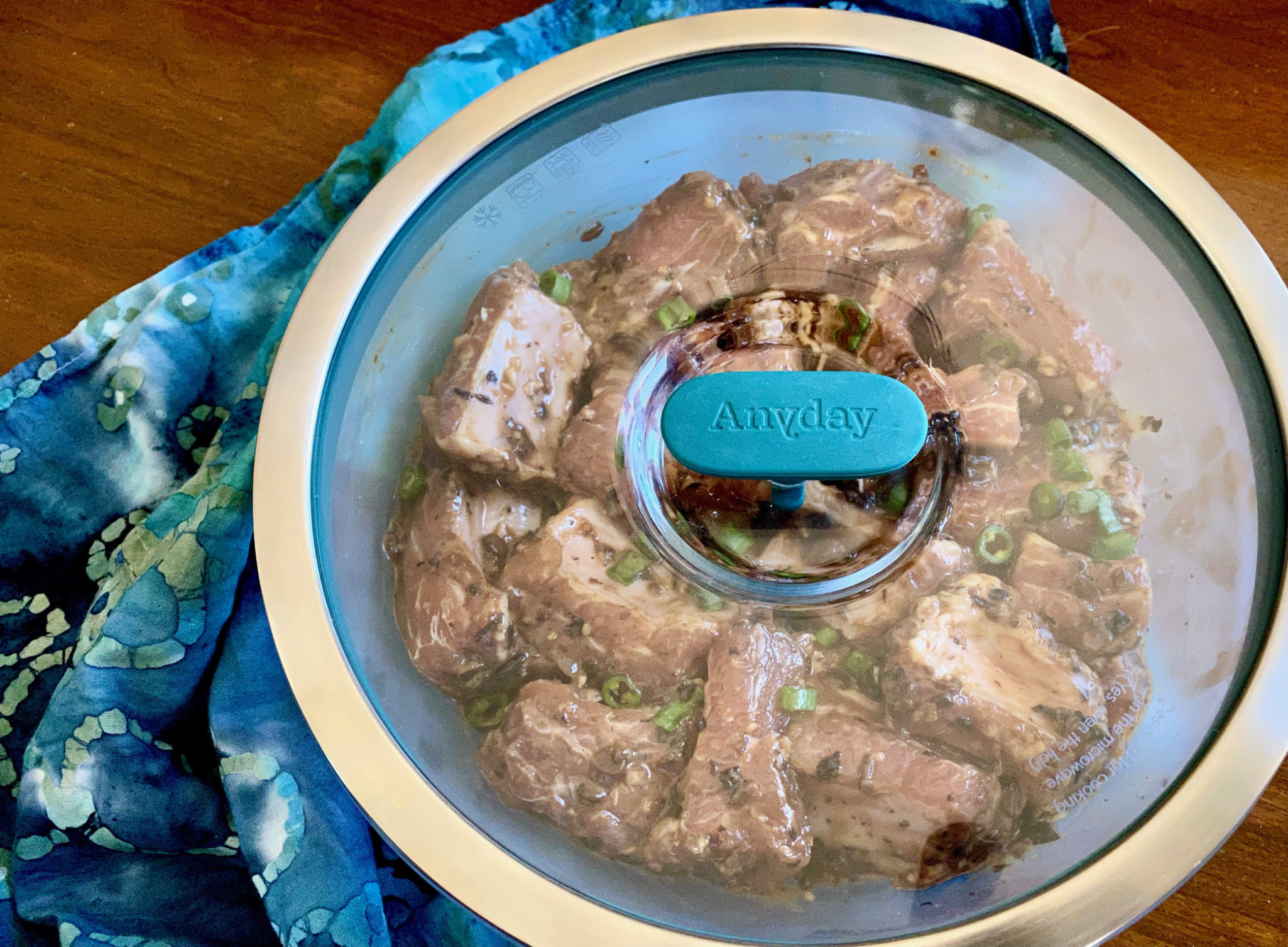
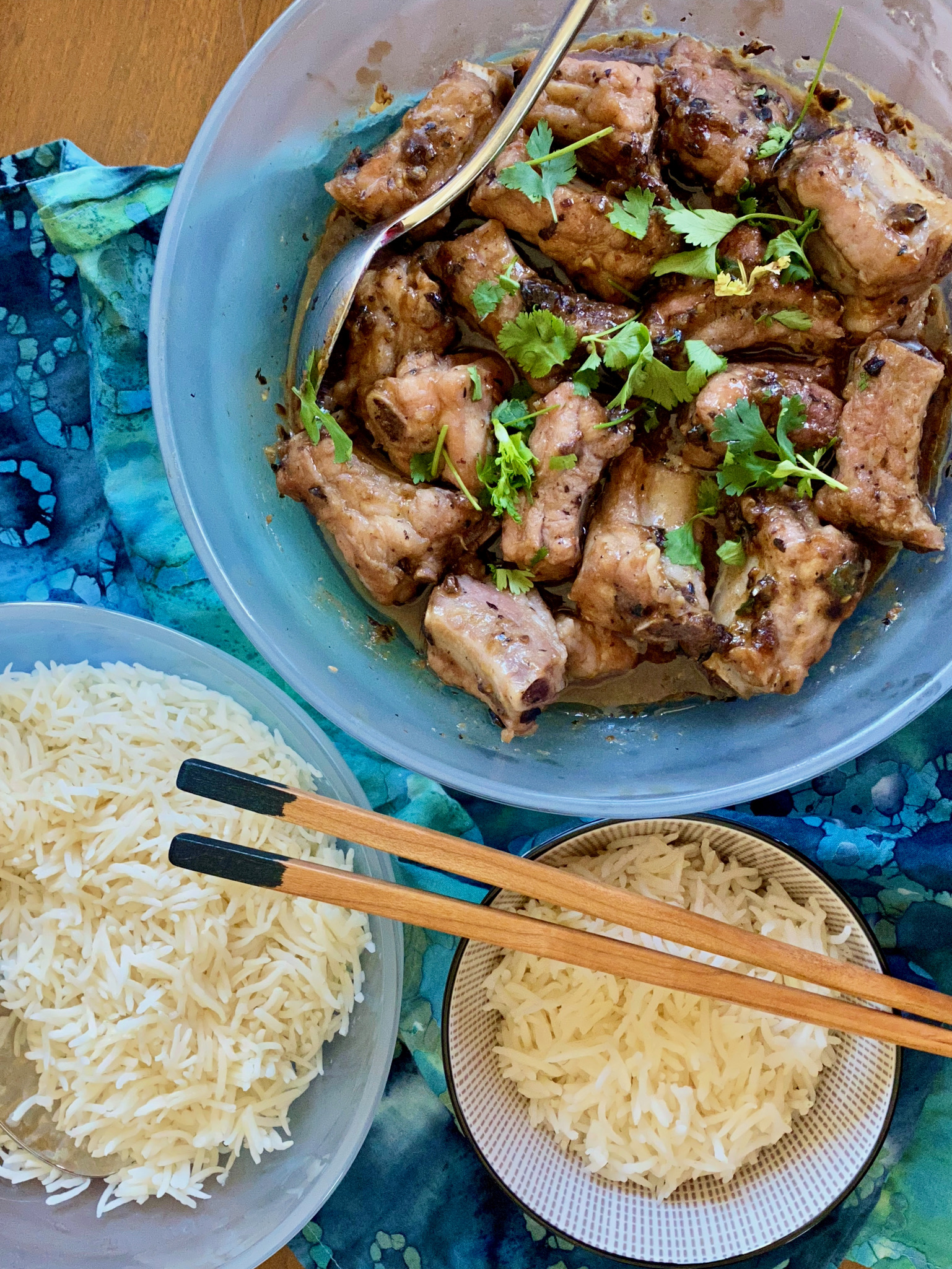

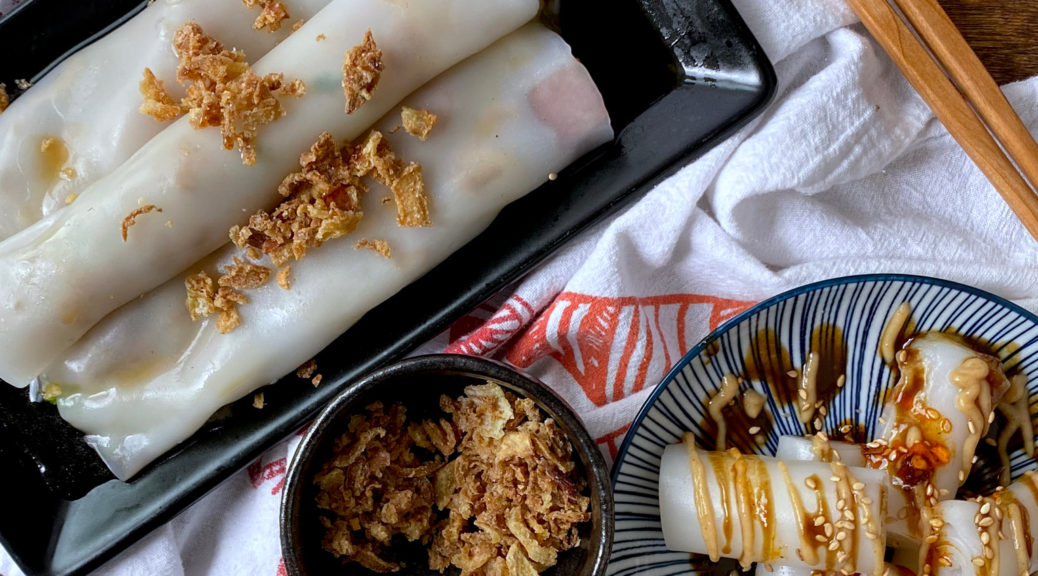
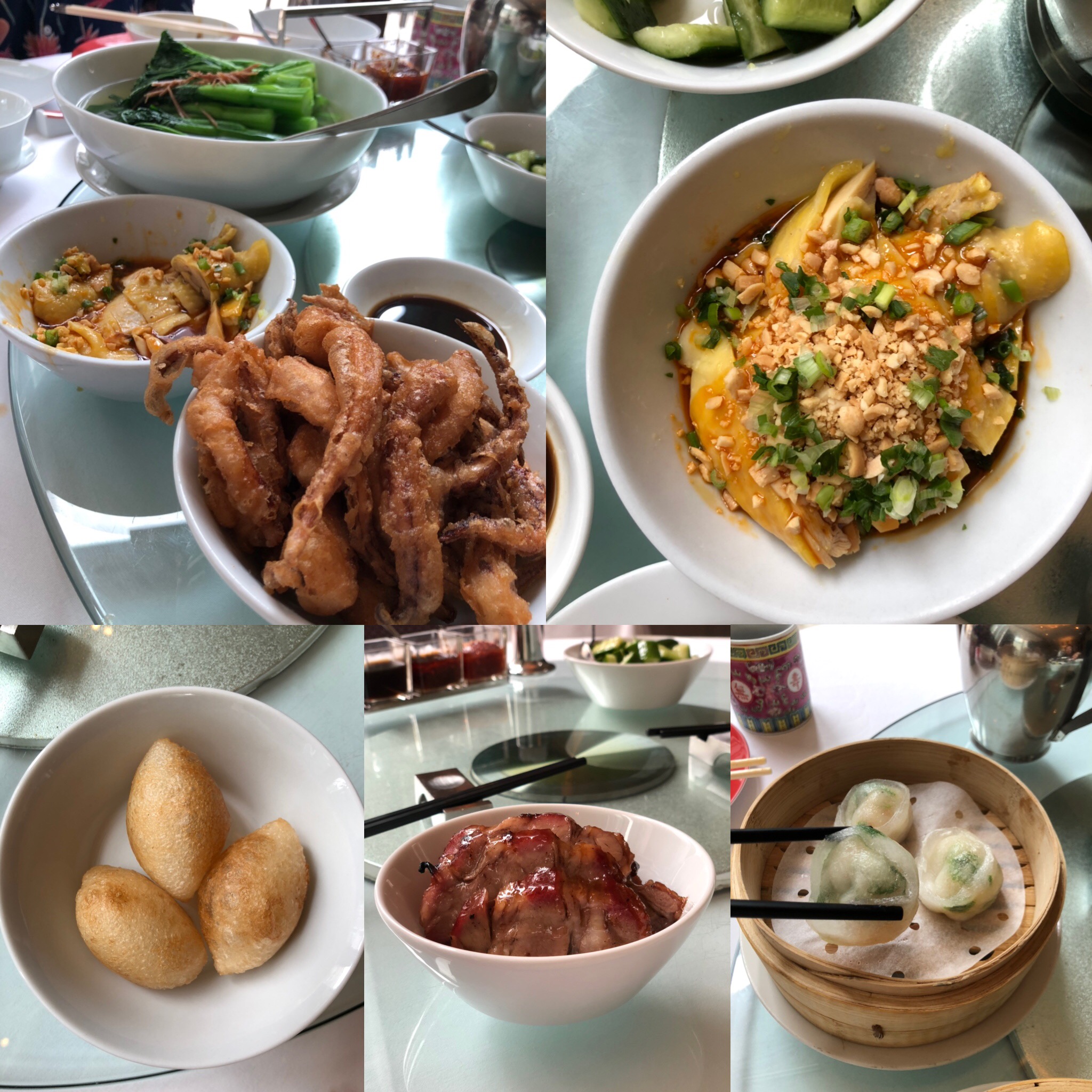
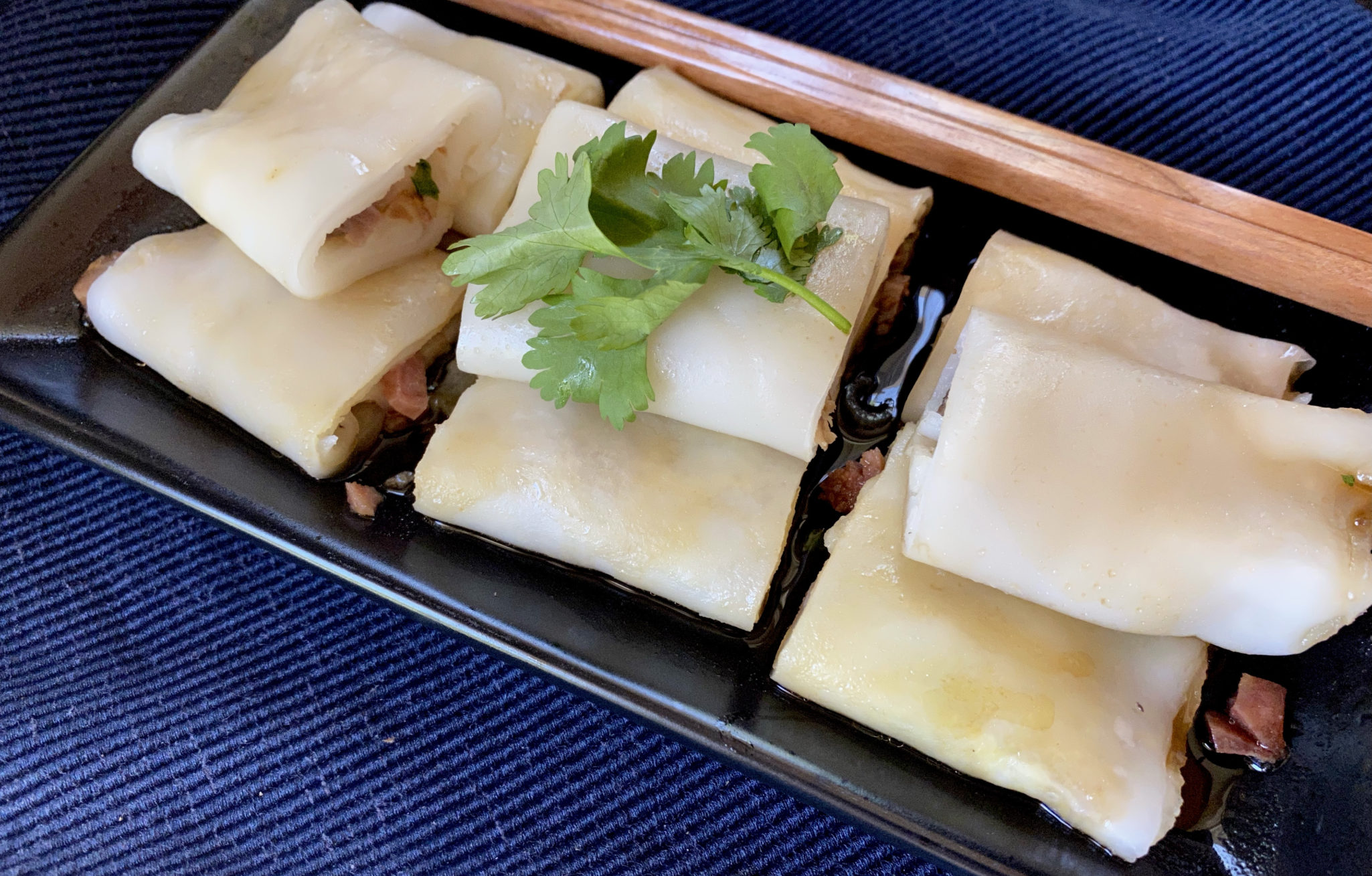 Microwave Magic
Microwave Magic